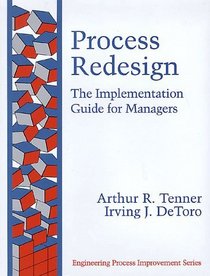Search -
Process Redesign : The Implementation Guide for Managers
Process Redesign The Implementation Guide for Managers
Author:
From the Inside Flap Total quality management was the dominant business strategy of the 1980s and reshaped many corporations around the world. In spite of the successes achieved by some, it eluded just as many, mostly because these companies were unable to tie quality to results like increased revenues, profits, or market share. The road to tota... more »
Author:
From the Inside Flap Total quality management was the dominant business strategy of the 1980s and reshaped many corporations around the world. In spite of the successes achieved by some, it eluded just as many, mostly because these companies were unable to tie quality to results like increased revenues, profits, or market share. The road to tota... more »
ISBN-13: 9780201633917
ISBN-10: 0201633914
Publication Date: 9/5/1996
Pages: 352
Rating: ?
ISBN-10: 0201633914
Publication Date: 9/5/1996
Pages: 352
Rating: ?
0 stars, based on 0 rating
Genres:
- Business & Money >> Management & Leadership >> Organizational Change
- Business & Money >> Management & Leadership >> Quality Control
- Business & Money >> Business Development & Entrepreneurship >> Entrepreneurship





